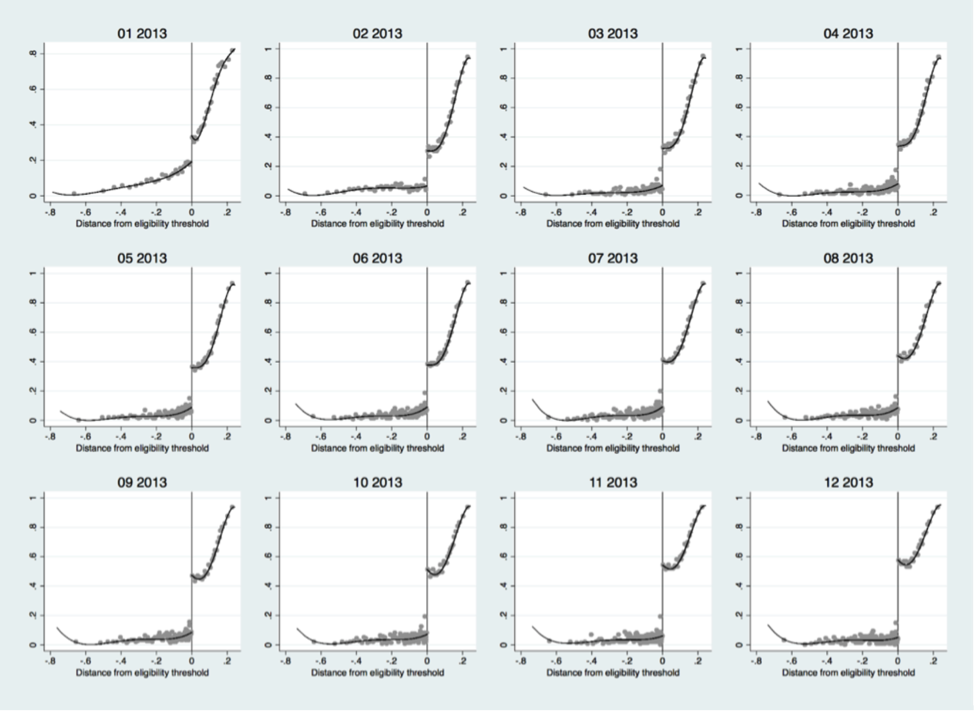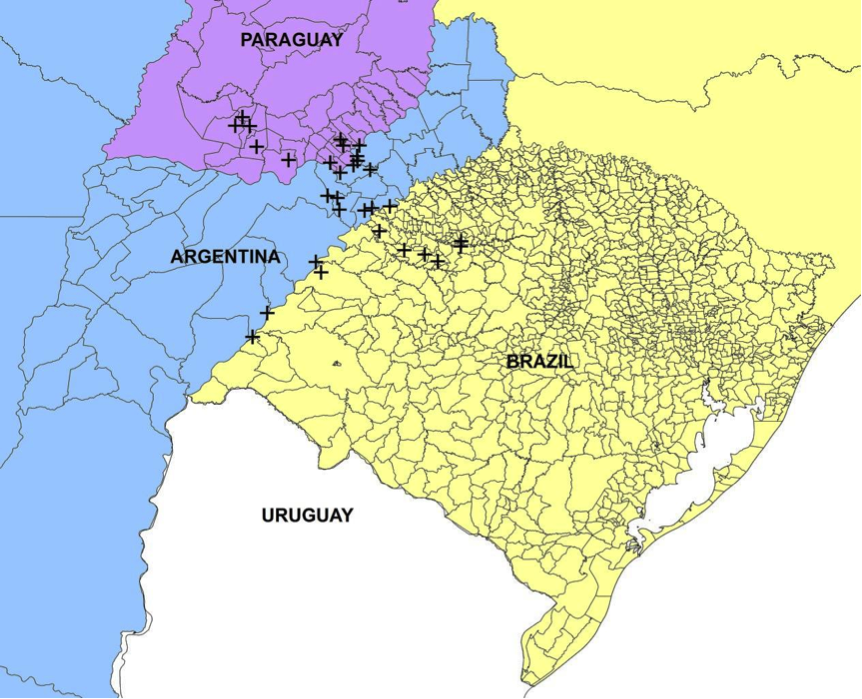Editor’s note: This post is part of a series showcasing Barcelona GSE master projects by students in the Class of 2018. The project is a required component of every master program.
Authors
Karina Colombo, Gabrielle Lohner, and Eric Ramirez-Diaz
Master’s Program
Paper Abstract
Our paper analyzes the impact of a cash transfer program targeting households in extreme poverty in Uruguay, called the Tarjeta Uruguay Social (henceforth referred to as TUS). In the past decades, cash transfers have become one of the main social assistance policies used to address poverty and inequality in developing countries. Their objective is to reduce vulnerability by increasing and smoothing household income, although additional objectives are usually defined depending on the program and country, such as increasing access to health and education, and reducing food insecurity (DFID 2011; Honorati et al. 2015).
The impact of these programs on different life outcomes has been widely studied. Overall, positive impacts on poverty, food insecurity, child school enrollment, labor outcomes, health and social cohesion have been found (DFID 2011; ODI 2016). Nevertheless, more research is still needed to understand the channels and particular aspects that determine their success, since countries differ widely in the details of program design. In our research, by taking advantage of considerable design modifications since the implementation of TUS, we evaluate the impact of the amount of the transfer and the benefit duration on relevant outcomes.
The Tarjeta Uruguay Social (TUS) is a conditional cash transfer program implemented in 2009 which aims at assisting those in situations of extreme poverty in Uruguay. It targets the 60,000 worst-off households by providing them with a monthly cash transfer on a prepaid magnetic card. This card can be used to purchase food items, cleaning supplies, and hygiene products, excluding cigarettes and alcohol. Eligibility for the program is based on the Critical Needs Index (CNI), a proxy means test that evaluates household poverty, using variables associated to education, dwelling, access to durable goods and household composition. The program has undergone many modifications since its inception, including increasing the number of participants, changing the eligibility criteria, and a doubling of the benefit for half of the recipients. Our analysis begins in 2013, in which the program had 60,000 participants, and the poorest 30,000 according to the CNI received a doubling of their benefit, creating two benefit categories: Simple TUS and Double TUS. In our research, we exploit the doubling of the benefit based on the CNI by using a Fuzzy Regression Discontinuity Design to evaluate the impact of the amount of the benefit on life outcomes.
The availability of an extensive set of administrative data allowed us to evaluate the impact of the doubling on an array of outcomes. There are many different channels through which this cash transfer program could have positive effects, since the resources freed up by the relaxation of the household budget constraint could be used differently according to household preferences. Therefore, by taking advantage of a rich set of administrative data, we analyzed 65 outcomes: housing and living conditions, food insecurity, formal labor market work, education enrollment of children and adolescents, prenatal and birth health conditions, and family composition. Additionally, we analyze how the duration of the benefit affects the impact of the program by comparing the effects for beneficiaries who receive the transfer for different time periods. We analyze short-term outcomes for those who receive the transfer for less than a year; medium-term outcomes for those who receive the transfer for two to three years; and long-term outcomes for those who receive the transfer consistently for three years.
Conclusions

Our results show than an increase in the amount of a cash transfer can in fact have important impacts on the life outcomes of recipients. Positive effects were found with regard to living conditions, with an increase in investment in durable goods and a betterment of housing conditions, such as purchasing water heaters or washing machines, adding a bathroom to the home, and upgrading from a trash roof to a concrete one. Additionally, results show positive impacts concerning individual outcomes, with improvements regarding prenatal care and months of formal work observed. Nevertheless, some negative results were found in the short-term, which could potentially be explained by an attempt of manipulation by the beneficiaries in order to ensure continued benefit provision under uncertainty. Results also show that the duration of the benefit has a considerable impact on how the transfer is spent. More positive significant household results are found in the medium-term, while individual results become stronger in the long-term. The increasing effects of more persistent benefits could potentially be explained due to uncertainty in the short-term regarding whether the benefit will continue to be provided, which decreases over time.
This study contributes to the literature of poverty alleviation policies by providing evidence which can be used to improve the design of cash transfer programs. The positive effects found in this paper from comparing different amounts of the transfer within the same program indicate that the monetary amount of the benefit is a relevant policy parameter with consequences for the effectiveness of the program. Additionally, the results for heterogeneous effects by benefit duration indicate that the persistence of the transfer is another relevant aspect of program design. The evidence provided in this paper indicates that a predefined duration upon entering the program together with a minimum duration of one year could constitute a good practice. This may mitigate negative effects regarding household manipulation attempts and potentiate positive effects by reducing income volatility and increasing housing investments. Our results suggest that further research on benefit size and timing is imperative for policy design of cash transfers, one of the main tools to reach universal social protection.
Download the full paper [pdf]
More about the EPP Program at the Barcelona Graduate School of Economics

 The following job market paper summary was contributed by
The following job market paper summary was contributed by 
